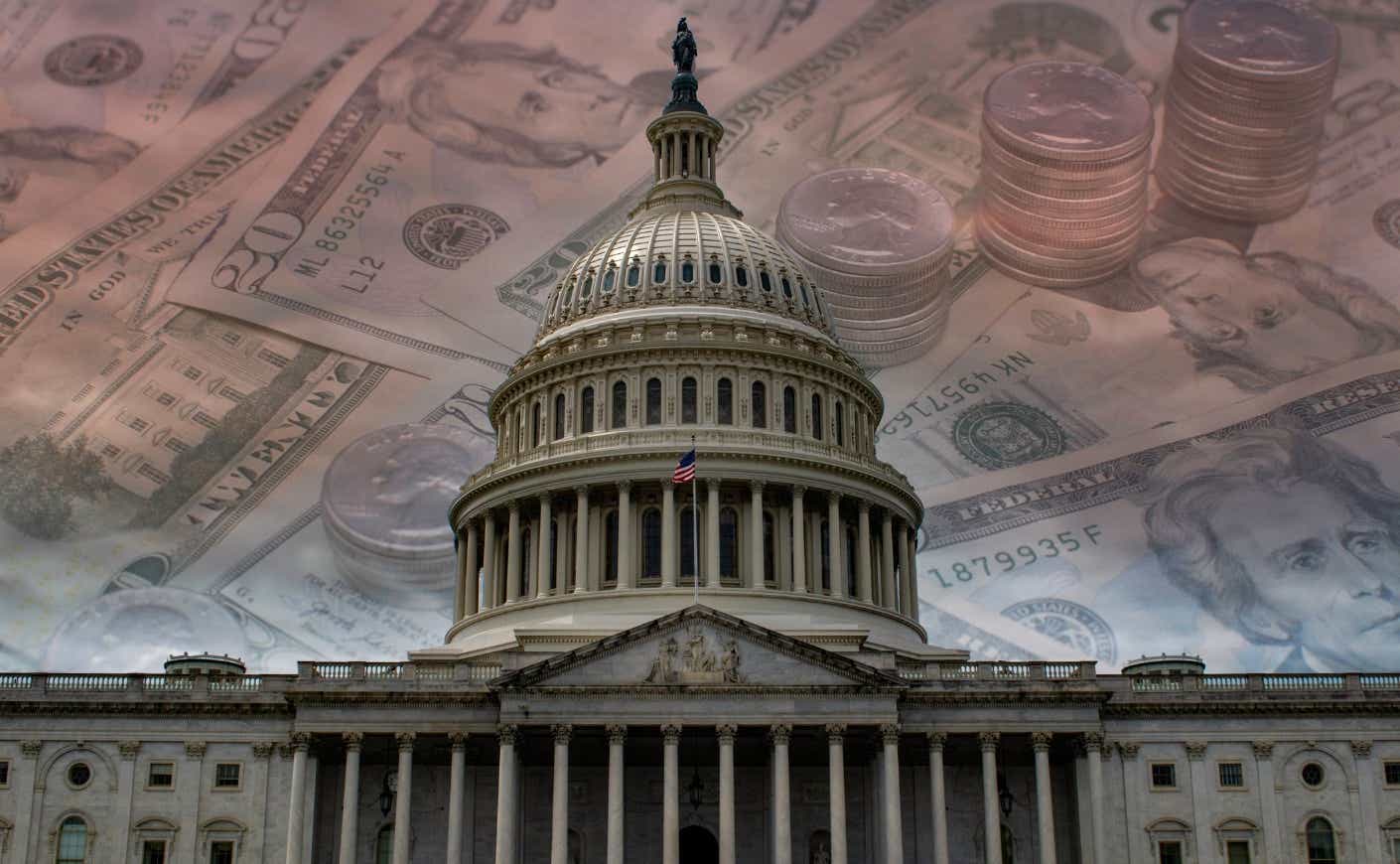One expert calls it “a truly depressing achievement.”
The national debt, which measures what the U.S. owes its creditors, has reached new heights after hitting $34 trillion — but this is most certainly not a cause for celebration.
In fact, it’s a “truly depressing achievement,” according to Maya MacGuineas, president of the watchdog group Committee for a Responsible Federal Budget. In a statement, she cited political leaders’ unwillingness to make tough fiscal decisions as a reason for this tough situation, and she offered a call for lawmakers to devise a plan to address the ballooning budget.
“We remain hopeful that policymakers will take further measures to reduce our borrowing either by raising taxes, reducing spending, or creating a fiscal commission — or ideally by doing all of the above,” MacGuineas said in a statement.
This immense financial burden can be difficult to grasp, so we took a closer look into how we got here and why Americans should be concerned.
Where does America’s national debt stand now?
The total of our outstanding public debt officially reached $34.001 trillion on Dec. 29., according to data published on Tuesday by the Treasury Department. This milestone comes just three months after the U.S. national debt surpassed $33 trillion. To put this into perspective, the latest figure is approximately 1.2 times the annual economic output of the entire nation.
This mounting debt has already taken its toll on America’s credit. Fitch Ratings downgraded the nation’s score from AAA to AA+ in August, and in November, Moody’s Investors Service warned it could strip the U.S. of its outstanding AAA rating, which has been maintained since 1917. This potential ding to our nation’s creditworthiness could have some serious downstream effects: Analyst Jon Maier told CNBC that this could end up resulting in higher mortgage and credit card rates at a time when many Americans are already tightening their budgets due to lingering inflation.
That said, not all experts necessarily agree that we’re careening towards a crisis. After all, most of the economy is still relatively strong and unemployment remains low. “It’s important to hold the debt number in context: The economy is growing, it is strong, and we have to think about it relative to our resources,” economist Claudia Sahm, who worked as a researcher at the Federal Reserve, told the Washington Post. “This is not a sign of an imminent crisis — maybe something we need to deal with, but we are not in a crisis moment on debt.”
Who’s to blame for our nation’s increasing debt?
Well, it depends on who you ask. While President Biden has blamed GOP tax cuts for adding trillions to the deficit, Republicans say federal spending programs championed by the Biden administration, like food assistance, are too expensive.
But the reality is that neither party is solely to blame, as the national debt has soared under leadership from both sides of the aisle in recent years. For instance, the much-needed federal Covid-19 relief packages that were passed during both the Trump and Biden administrations have contributed to this increased financial burden.
Still, some presidents have made more of a dent than others. According to the Center for American Progress, a left-leaning think tank, tax cuts under Presidents George W. Bush and Donald Trump have added $10 trillion to the national debt. By comparison, former Democratic President Barack Obama incurred more than $7 trillion during his time in office, and his successor Joe Biden has now tacked on another $2 trillion to the deficit so far. While this may sound like a lot, President Franklin D. Roosevelt still leads the pack, having contributed the largest percentage increase to the U.S. national debt to date at $178,464,714,660.98.
How will this impact the impending government shutdown?
The U.S. national debt has become a point of contention between Democrats and Republicans in recent years, sparking bitter standoffs over the federal budget that have caused near government shutdowns —and another one could be on the way.
Congress returns from its holiday break next week, when lawmakers are expected to address the two stopgap funding bills that are set to expire on Jan. 19 and Feb. 2. If a deal isn’t made, the government could face at least a partial shutdown.
In terms of negotiations, there’s still a ways to go. House Republicans have pushed to cut spending below the levels agreed to in the June debt ceiling deal, which would’ve limited military spending to $886 billion and nonmilitary discretionary spending to $704 billion. But Democrats who lead the Senate have rejected these GOP calls for cuts, and congressional leaders are currently negotiating a top-line funding level for the fiscal year 2024.
What we do know is that the longer lawmakers put off the issue of our nation’s increasing debt, the harder it might be to solve — and some fear it might already be too late. “We put off solutions for too long, and now we’ll have to take more drastic action,” said MacGuineas.








